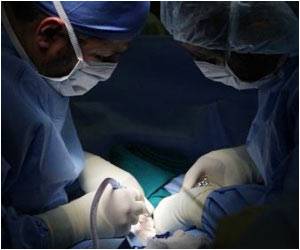
Body temperature generally decreases during surgery, largely because anesthetic medications interfere with the body’s processes for temperature regulations. While practices vary around the world, nursing staff in Western countries typically use forced-air heaters to keep patients warm during surgery, with a target temperature of 35.5 degree Celsius. This trial, one of the largest to date, sought to determine whether warming patients even more — to 37 degree Celsius — would reduce the risk of cardiac complications, which are a leading cause of death in the first 30 days after major surgery.
“This trial tells us that there is no benefit to aggressively warming patients to 37 C during surgery. It is simply unnecessary, and it doesn’t improve any substantive outcomes,” said Daniel I. Sessler, MD, Michael Cudahy professor and chair of the department of outcomes research at Cleveland Clinic and the trial’s lead author. “Also, the results show that 36 C should not be considered the threshold for defining mild hypothermia since there was no harm at 35.5 C.“
The researchers recruited 5,050 patients who underwent surgery at 13 medical centers, mostly in China. Participants had a variety of major noncardiac surgery procedures lasting a minimum of two hours and an average of four hours. Half of the patients were assigned approximately for routine care, with a target body temperature of 35.5 degree Celsius and a half with aggressive warming and a target body temperature of 37 degree Celsius.
For patients assigned to routine care, the nursing staff placed a warming cover but did not activate it until the patient’s body temperature dropped below 35.5 C, resulting in an average group body temperature of 35.6 C. With a more intense warming protocol, the nurses covered the patients with a warm blanket for 30 min before surgery and then Patients were heated to an average of 37.1 C during surgery using two forced air heaters.
The test report found no benefit based on the combined primary endpoint and no significant differences between the groups based on the severity of the injury, hospitalization time, hospital re-admission, or blood transfusion. The researchers were surprised that the rates of wound infections and blood transfusions were the same as in previous studies, suggesting that it was more common in both patients maintained at lower body temperatures.
READ RELATED: Sullivan Stapleton Height, Weight, Age, Body Statistics
Sessler said that nearly all patients were enrolled in China, but the results should be generalizable to patients and health care settings in other countries too.
“This study shows that it is reasonable to keep patients warm, but we saw no evidence whatsoever that it makes a difference if they’re just above or just below 36 C,” Sessler said. “Surgical patients should still be warmed, but there’s no need to be super-aggressive about the warming.“
The study did not assess the less serious or non-clinical consequences, such as patient comfort or tremor. Patients who maintain low body temperature may feel shivering or cold after surgery, but both are temporary and unlikely to have a meaningful health impact, Sesler said.
Source: Medindia
Source:







